Feature your business, services, products, events & news. Submit Website.
Breaking Top Featured Content:
Tilt Shift Lens: Best Choices for Your Business
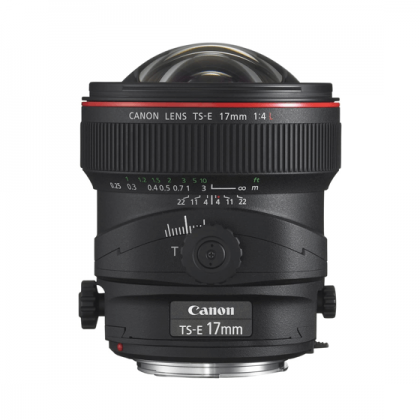
A tilt-shift lens offers unique capabilities, allowing photographers to creatively control perspective and depth of field. With their extensive applications across various photography genres, they are powerful tools for photographers who understand their intricacies. These features enable photographers to manipulate focus, rectify distortion, and evoke unique visual effects, adding new dimensions to creative photography.
This makes tilt-shift lenses versatile assets in diverse photographic genres. As with any tool, practice and understanding are key to unlocking the full potential of any tilt-shift lens.
Definition of a Tilt-Shift Lens
A tilt-shift lens, also referred to as a perspective control lens, is a specialized type of camera lens known for its unique ability to manipulate the orientation of the lens plane relative to the image sensor. With the tilt and shift features, these lenses allow photographers to alter perspective and focus in ways a typical lens can’t. They offer otherwise impossible camera angles and a wider range of selective focus, thereby expanding the horizons of creative photography.
History and Development
The tilt-shift lens originated as a tool for architectural photography in the mid-20th century to correct converging verticals in building photos. With time, they found uses in various genres of photography due to their unique ability to manipulate the plane of focus. As technology advanced, brands like Canon and Nikon developed sophisticated versions of these lenses, like the Canon TS-E series and Nikon PC-E, widening their reach and appeal to photographers.
Uses of Tilt-Shift Lenses
Tilt-shift lenses excel in many applications, from architectural photography to landscape and product photography, where perspective control and depth of field adjustments are vital. For instance, they can correct perspective distortion in building photos, achieve a miniature effect by manipulating focus, or ensure sharp focus across a vast landscape.
Types of Tilt-Shift Lenses
Tilt-shift lenses come in various focal lengths, with wider ones like the Canon TS-E 17mm suited for architecture and interiors, while longer focal lengths like the Nikon PC-E Micro NIKKOR 85mm better for product photography and portraiture. Some tilt-shift lenses also feature rotation capabilities, providing further creative possibilities.
Difference Between Regular and Tilt-Shift Lenses
Unlike regular lenses, tilt-shift lenses offer photographers two unique capabilities: tilt and shift. The tilt function allows selective focus by changing the lens plane’s angle, while the shift function moves the lens parallel to the image sensor, aiding in convergence control and perspective correction. These features let photographers manage perspective distortion, maintain sharp focus across the scene, and explore creative perspectives, beyond what’s possible with a normal lens.
Tilt-Shift Lens
If you are looking to get the most out of your photography, tilt-shift lens will add a new perspective to the images you take. And if you are in the market for one, here are some of the top ones now available on Amazon.
- Top Pick: Canon TS-E 17mm Aspherical Ultra Wide Tilt-Shift Lens
- Runner Up: Nikon PC NIKKOR 19mm Tilt-Shit Lens
- Best Value: Samyang 24 mm F3.5 Tilt Shift Lens
Canon TS-E 17mm Aspherical Ultra Wide Tilt-Shift Lens
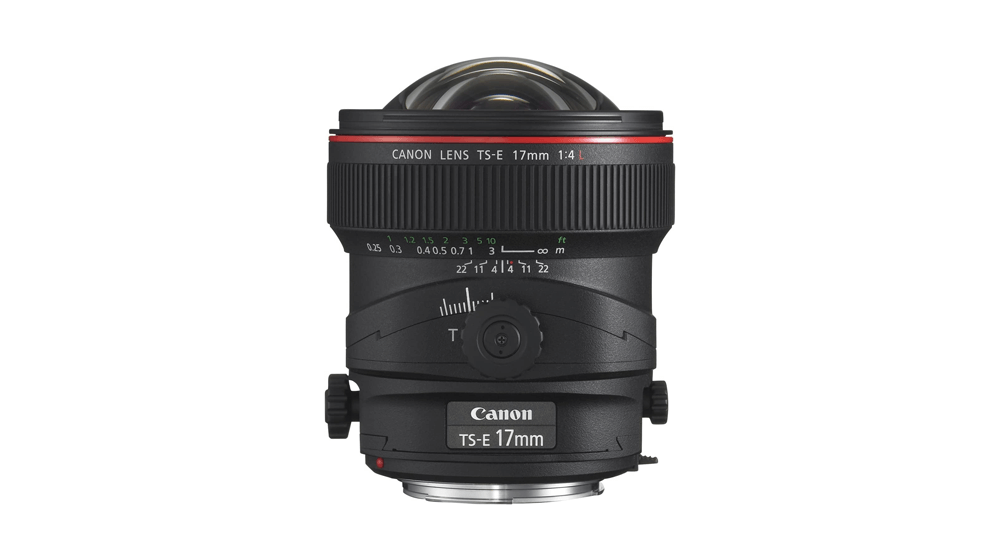
Top Pick: As the top pick, the Canon TS-E 17mm Aspherical Ultra Wide Tilt-Shift Lens is ideal for capturing stunning architecture and landscapes. High-precision lens elements and specially coated aspherical elements deliver exceptional image quality with minimal distortion and chromatic aberration. Its tilt and shift mechanism allows you to freely combine tilting and shifting within a range of +/- 90 degrees, providing versatility in adjusting perspective and focus.
Product Features:
- Tilt and shift lens compatible with all Canon EOS cameras
- Ultra wide 17mm focal length, ideal for architecture and landscapes
- High-precision lens elements for low distortion and high resolution
- Tilt mechanism rotates +/- 90 degrees for versatile perspective control
- Shift mechanism rotates +/- 90 degrees for flexible focus adjustment
- Aspherical and UD lens elements minimize chromatic aberration
- Circular aperture for creative, blurred highlights
- Floating internal focus mechanism for consistent image quality
Pros:
- Versatile tilt and shift capabilities for creative control
- Wide 17mm focal length captures expansive scenes
- High-resolution and low distortion image quality
- Aspherical and UD lens elements reduce chromatic aberration
- Circular aperture produces beautiful out-of-focus highlights
Cons:
- Limited to Canon EF mount cameras
- Requires familiarity with tilt-shift photography techniques
- Higher price compared to standard lenses
- Larger and heavier than non-tilt-shift lenses
The Canon TS-E 17mm Aspherical Ultra Wide Tilt-Shift Lens The Canon TS-E 17mm lens features a circular aperture that creates beautiful, blurred highlights for artistic effects. The floating internal focus mechanism ensures high-image quality throughout the focus range, allowing you to capture sharp details at any distance.
Canon TS-E 17mm Aspherical Ultra Wide Tilt-Shift Lens
Nikon PC NIKKOR 19mm Tilt-Shit Lens
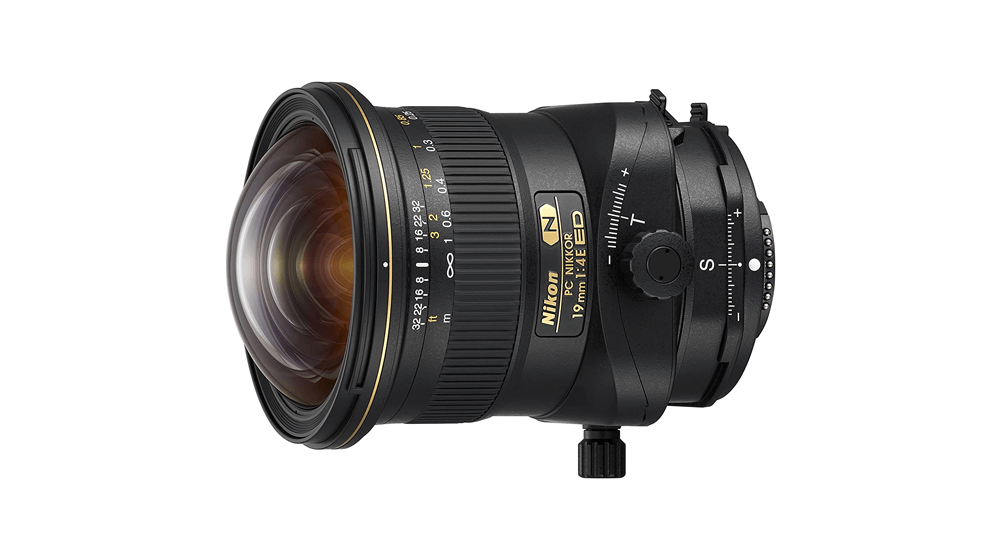
Runner Up: The Nikon PC NIKKOR 19mm f/4E ED lens is the. Designed for storytellers who seek to capture reality-bending views of landscapes, cityscapes, architecture, and fine art, this lens offers unparalleled control over perspective, focus, and depth of field. With tilt and shift operations that can be made parallel or perpendicular, you can shape scenes with selective defocus or sharp focus throughout.
Product Features:
- Tilt and shift lens with parallel or perpendicular operations
- Three Extra Low Dispersion (ED) glass elements and two Aspheric glass (AS) elements
- Nano Crystal Coat (N) for reduced ghosting and flare
- Ideal for architecture, interiors, landscapes, and panoramas
- Maximum perspective control with PC rotation capability
Pros:
- Unparalleled control over perspective and depth of field
- Transformative image quality with minimal distortion and glare
- Versatile for capturing architecture, landscapes, and fine art
- Independent tilt and shift adjustments with PC rotation capability
- Enhanced backlight tolerance for clear and sharp images
Cons:
- Requires familiarity with tilt and shift techniques
- Limited to Nikon F mount cameras
- Higher price compared to standard lenses
- Not suitable for all types of photography
The Nikon PC NIKKOR 19mm f/4E ED lens features three Extra Low Dispersion (ED) glass elements and two Aspheric glass (AS) elements, this lens combats distortion and glare, delivering transformative image quality even at the widest aperture setting. The Nano Crystal Coat (N) enhances backlight tolerance, minimizing ghosting and flare.
Samyang 24 mm F3.5 Tilt Shift Lens
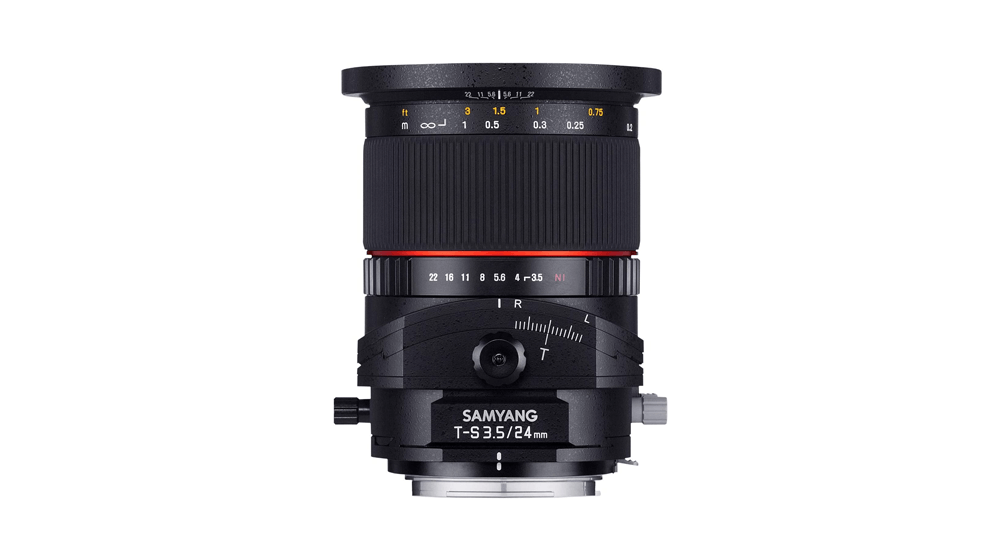
Best Value: The Samyang 24mm F3.5 Tilt Shift Lens delivers the best value with its unique optical and mechanical construction. This wide-angle, full-frame lens offers perspective control and tilt-shift functions, enabling precise control over perspective, depth of field, and convergence of lines.
Product Features:
- Tilt and shift lens for precise perspective and depth of field control
- Aspherical and low-dispersion lens elements for sharp resolution
- UMC coating for reduced reflections, flare, and ghosting
- Tilt function for increased depth of sharpness and creative effects
- Shift function for distortion-free architectural photography
- Rotation capability for flexible adjustments
Pros:
- Precise control over perspective and depth of field
- Excellent image quality with sharp resolution and accurate colors
- Versatile for architecture and landscape photography
- Reduction of reflections, flare, and ghosting
- Creative possibilities with tilt and shift functions
Cons:
- Manual focus may require practice and precision
- Limited compatibility with Nikon 1 mount cameras
- Learning curve for effective tilt and shift usage
- Higher price compared to non-tilt-shift lenses
While manual focus and a learning curve are involved, the Samyang 24mm F3.5 Tilt Shift Lens opens up new avenues of creativity. With features such as aspherical and low-dispersion lens elements, the lens minimizes aberrations, resulting in sharp resolution and accurate colors.
Samyang 24 mm F3.5 Tilt Shift Lens
Canon TS-E 24mm f/3.5L II Ultra Wide Tilt-Shift Lens
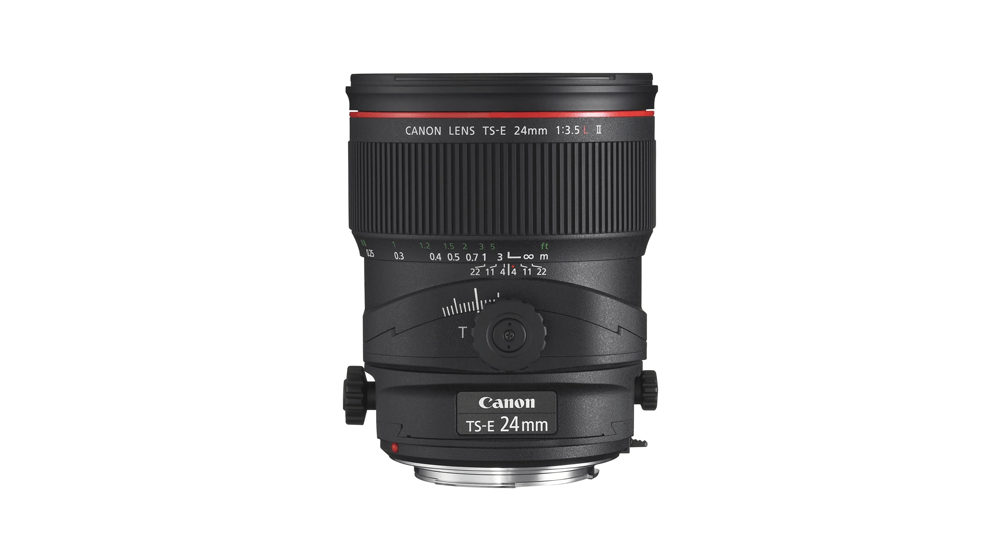
The Canon TS-E 24mm f/3.5L II Ultra Wide Tilt-Shift Lens has ultra wide 24mm focal length and tilt-shift capabilities for precise control over perspective and focus. The sub-wavelength structure and super-spectra coatings further reduce ghosting and flare, delivering great image quality.
Compatible with all Canon EOS cameras, the Canon TS-E 24mm lens offers a wide range of movement. The tilt and shift mechanisms can rotate up to +/- 90 degrees, allowing shift in any direction and tilt relative to the shift. Its ergonomic design and easily operated knobs provide smooth adjustments.
Product Features:
- Tilt and shift lens compatible with all Canon EOS cameras
- Ultra wide 24mm focal length, perfect for architecture and landscapes
- High-precision lens elements for low distortion and high resolution
- +/- 8.5 degrees tilt and +/- 12mm shift for precise control
- Aspherical and UD lens elements minimize chromatic aberration
- Sub-wavelength structure and super-spectra coatings reduce ghosting and flare
- Circular aperture for creative, blurred highlights
Pros:
- Precise control over perspective and focus
- Ultra wide focal length for expansive views
- High-resolution and low-distortion image quality
- Versatile tilt and shift capabilities
- Ergonomic design for easy operation
Cons:
- Higher price compared to non-tilt-shift lenses
- Learning curve for effective tilt and shift usage
- Limited availability for non-Canon EF mount cameras
- May be bulky and heavier compared to standard lenses
The Canon TS-E 24mm f/3.5L II Ultra Wide Tilt-Shift Lens is Compatible with all Canon EOS cameras with a wide range of movement. The tilt and shift mechanisms can rotate up to +/- 90 degrees, allowing shift in any direction and tilt relative to the shift. Its ergonomic design and easily operated knobs provide smooth adjustments.
Canon TS-E 24mm f/3.5L II Ultra Wide Tilt-Shift Lens
Nikon PC-E FX Micro NIKKOR 85mm Tilt-Shift Lens
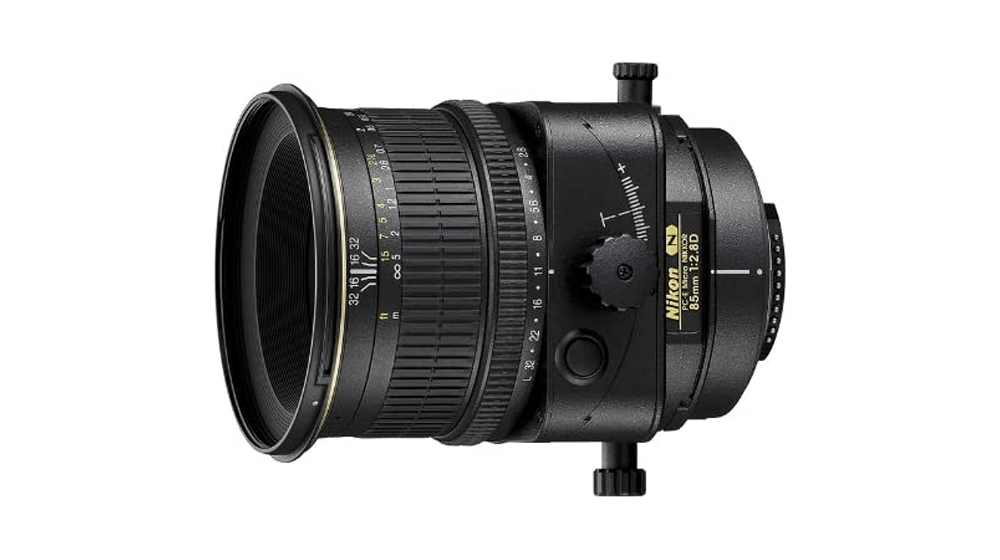
The Nikon PC-E FX Micro NIKKOR 85mm Tilt-Shift Lens is a medium-telephoto lens with exceptional control over perspective and depth-of-field, making it perfect for portrait, nature, and commercial photography. The lens features a shifting range of plus or minus 11.5mm and a tilting range of plus or minus 8.5 degrees, providing precise perspective control.
The revolving capability of plus or minus 90 degrees in 30-degree increments adds versatility to your tilt-shift shooting effects. Coated with Nikon’s Nano Crystal Coat and Super Integrated Coating, the lens delivers superior image clarity, reduced reflections, and minimized ghosting and flare.
Pros:
- Exceptional control over perspective and depth-of-field
- Versatile tilt, shift, and rotation capabilities
- High-quality construction and image performance
- Nano Crystal Coat for superior image clarity
- Compatible with various Nikon formats and cameras
Cons:
- Manual focus requires practice and precision
- Limited autofocus functionality
- Specialized usage may require learning curve
- Relatively larger and heavier compared to standard lenses
The Nikon PC-E FX Micro NIKKOR 85mm Tilt-Shift Lens has a revolving capability of plus or minus 90 degrees in 30-degree increments, adding versatility to your tilt-shift shooting effects. Coated with Nikon’s Nano Crystal Coat and Super Integrated Coating, the lens delivers superior image clarity, reduced reflections, and minimized ghosting and flare.
Nikon PC-E FX Micro NIKKOR 85mm Tilt-Shift Lens
Venus Laowa 15mm f/4.5 Zero-D Shift Lens
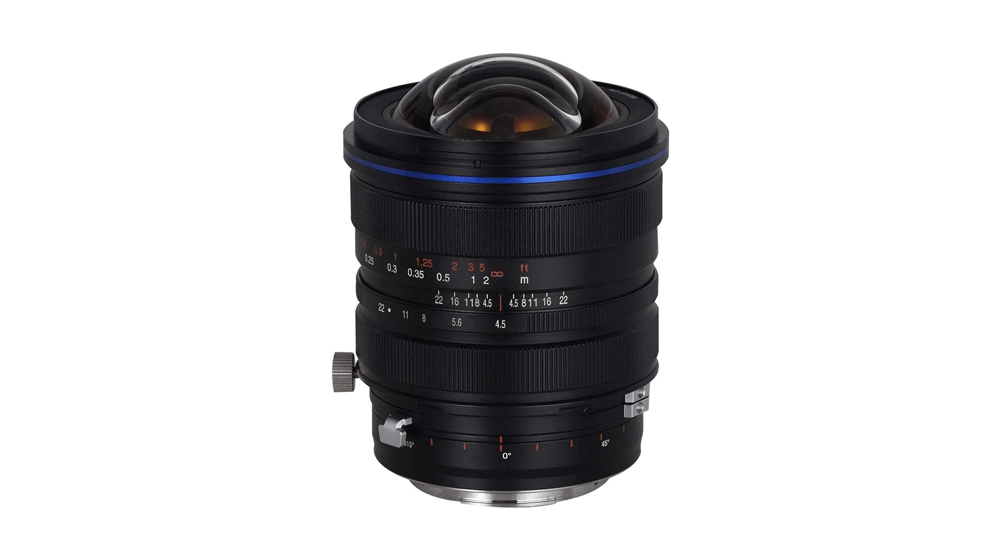
The Venus Laowa 15mm f/4.5 Zero-D Shift Lens has the world’s widest shift lens for full-frame and medium format cameras. It offers a shift range of +/-11mm for full-frame and +/-8mm for medium format, allowing for precise perspective adjustments.
Features:
- World’s widest shift lens for full-frame cameras
- Shift range of +/-11mm (full-frame) and +/-8mm (medium format)
- Ideal for architectural and interior photography
- High image sharpness with minimal distortion (Zero-D technology)
- Allows for expanded angle of view by stitching multiple images
Pros:
- Unparalleled wide-angle perspective and shift capability
- Excellent image sharpness and minimal distortion
- Perfect for architectural and interior photography
- Provides precise perspective adjustments
- Expands creative possibilities with extraordinary image perspectives
Cons:
- Completely manual lens, may not be suitable for those accustomed to auto shooting
- Limited autofocus functionality
- Requires practice and precision to master manual adjustments
- Relatively specialized usage compared to standard lenses
While it requires manual adjustments and may not suit those accustomed to auto shooting, the Venus Laowa 15mm f/4.5 Zero-D Shift Lens expands your creative possibilities and lets you easily capture unique perspectives.
Venus Laowa 15mm f/4.5 Zero-D Shift Lens
Nikon PC-E FX NIKKOR 24mm Tilt-Shift Lens
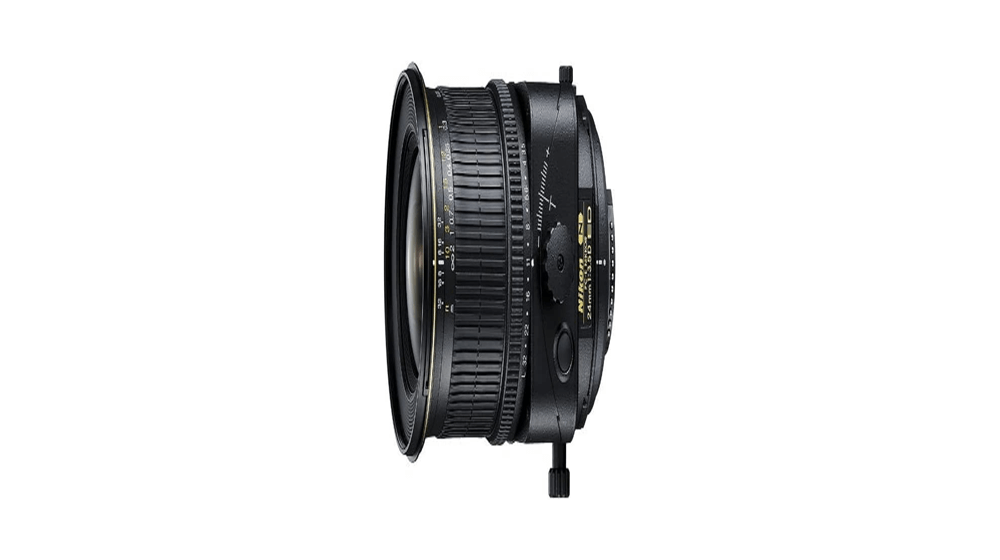
The Nikon PC-E FX NIKKOR 24mm Tilt-Shift Lens is designed for architecture, interiors, cityscapes, landscapes, and more. This wide-angle lens delivers features versatile tilt, shift, and rotation capabilities that allows you to creatively manipulate the focal plane and perspective to achieve unique and visually striking results.
Features:
- Versatile tilt, shift, and rotation capabilities
- Three ED glass elements for superior sharpness and color correction
- Three aspherical elements to reduce aberrations
- Nano Crystal Coat for minimized ghosting and flare
- High-performance super integrated coating (SIC) for enhanced color performance
- Rounded 9-blade diaphragm for a natural appearance of out-of-focus elements
Pros:
- Precise control over perspective and composition
- Excellent image sharpness and color reproduction
- Versatile tilt, shift, and rotation capabilities
- Minimized chromatic aberration and lens aberrations
- Durable construction for long-term reliability
Cons:
- Manual focus and adjustments may require practice
- Limited autofocus functionality
- Specialized usage compared to standard lenses
- Higher price point compared to non-tilt-shift lenses
Even though it requires manual adjustments, the Nikon PC-E FX NIKKOR 24mm Tilt-Shift Lens offers unrivaled control and exceptional performance, making it a valuable addition to your photography gear. The lens incorporates advanced technologies such as three ED glass elements, which effectively minimize chromatic aberration, and three aspherical elements that virtually eliminate coma and other lens aberrations.
Nikon PC-E FX NIKKOR 24mm Tilt-Shift Lens
Rokinon Tilt Shift 24mm f/3.5 Lens
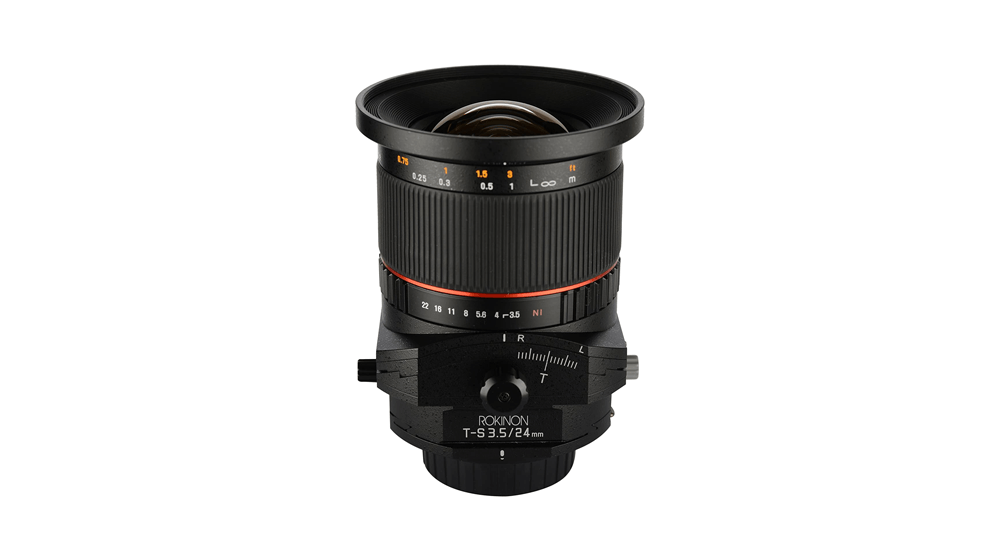
the Rokinon Tilt Shift 24mm f/3.5 Lens has a 24mm focal length and a maximum aperture of f/3.5. This manual focus lens delivers exceptional image quality and creative control. The lens features a maximum tilt amount of ±8.5° and a maximum shift amount of ±12mm, allowing you to manipulate the plane of focus and perspective distortion for creative effects.
Features:
- 24mm focal length with maximum aperture of f/3.5
- Maximum tilt amount of ±8.5° and maximum shift amount of ±12mm
- 90° right and left mount rotation with click stops for precise adjustments
- Manual focus for full control over focusing
- Constructed with 16 optical elements in 11 groups, including 2 aspherical lenses
- Suitable for full-frame and APS-C cameras
- Accepts 82mm filters
Pros:
- Precise control over perspective and focus
- Versatile for architectural and creative photography
- High-quality construction for durability
- Wide angle of view for capturing expansive scenes
- Affordable option for tilt-shift photography
Cons:
- Manual focus requires practice and precision
- Limited maximum aperture of f/3.5
- May not be suitable for all photography genres
- Bulky and may require additional equipment for stability
The Rokinon Tilt Shift 24mm f/3.5 Lens has a 90° right and left mount rotation with click stops at each 30° step, which enhances precision and ease of use. Constructed with 16 optical elements in 11 groups, including 2 aspherical lenses, this lens ensures sharpness and clarity in every shot. Suitable for full-frame cameras, the Rokinon Tilt Shift 24mm lens also works effectively on APS-C crop sensor cameras. It has an angle of view of 83.5° on full frame and 59.9° on APS-C, providing a wide field of view for various shooting scenarios. The lens accepts 82mm filters to enhance creative possibilities.
Rokinon TSL24M-N 24mm f/3.5 Tilt Shift Lens
Canon TS-E 45mm f/2.8 Tilt-Shift Lens
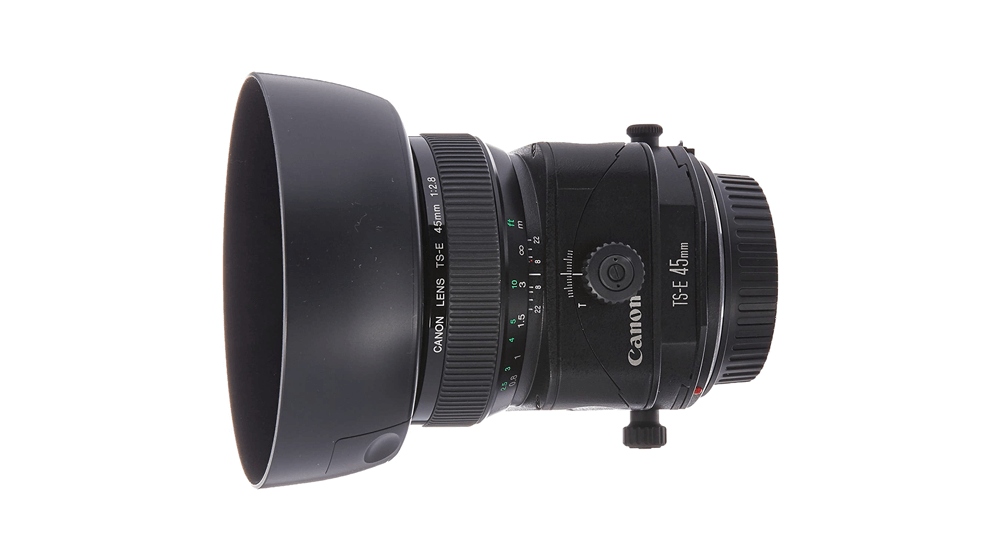
The Canon TS-E 45mm f/2.8 Tilt-Shift Lens has a normal focal length and tilt-shift capabilities for various applications, including product photography and achieving natural perspectives. The lens features a maximum aperture of f/2.8, allowing for beautiful background blur and low-light performance.
Features:
- Tilt-shift lens for creative control over perspective and focus
- 45mm focal length for a natural perspective
- Maximum aperture of f/2.8 for beautiful background blur
- Manual focus for precise adjustments
- Floating optical system for close focusing down to 1.3 feet
- Compatible with Canon EF mount cameras
Pros:
- Versatile lens for product photography and natural perspectives
- Precise control over the plane of focus and perspective
- Excellent build quality for durability
- Close focusing capabilities for detailed shots
- Compatible with Canon EF mount cameras
Cons:
- Manual focus requires practice and precision
- Limited maximum aperture of f/2.8
- Tilt-shift functionality may not be suitable for all photography genres
- May require additional time to master tilt-shift techniques
The Canon TS-E 45mm f/2.8 Tilt-Shift Lens has a floating optical system that enables focusing down to 1.3 feet, providing close-up capabilities for detailed shots. With up to 11mm of shift and 8° of tilt, you can modify the plane of focus and perspective to add creative depth and dimension to your images.
Canon TS-E 45mm f/2.8 Tilt-Shift Lens
Nikon 45mm f/2.8 Perspective Tilt-Shift Lens
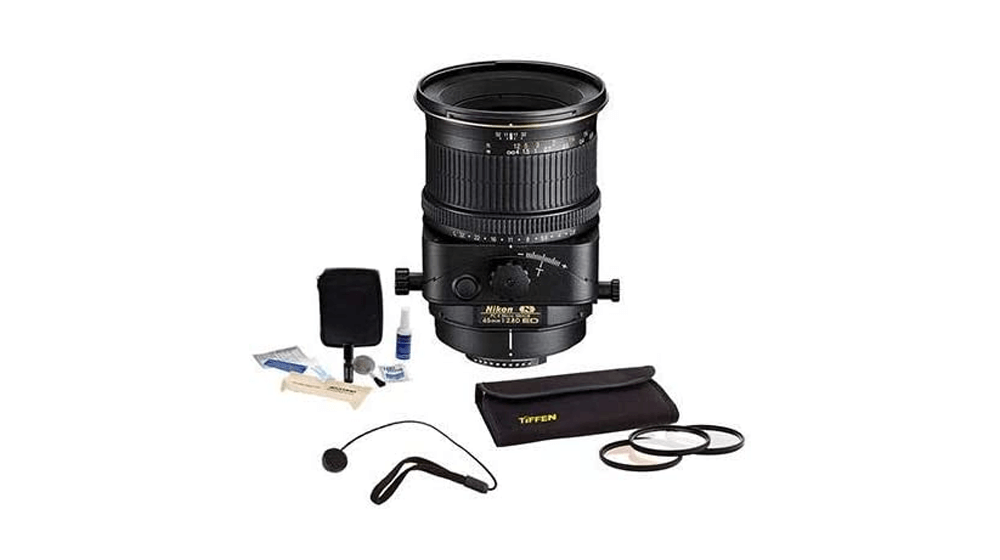
The Nikon 45mm f/2.8 Perspective Tilt-Shift Lens is designed to replicate the natural human eye, this lens corrects linear distortion, straightens converging lines, and offers exceptional depth-of-field command, making it a versatile choice for various applications, including architecture, nature, interiors, still-life, and product photography.
Features:
- Perspective control lens with a focal length of 45mm
- Ability to correct linear distortion and straighten converging lines
- Command over depth-of-field for creative effects
- Precise “shift” control for perspective correction and reflection avoidance
- Versatile “tilt” control for enhanced depth-of-field control
- Superior optical performance and image quality
Pros:
- Precise perspective correction and distortion control
- Exceptional depth-of-field command for creative effects
- Versatility for various photography applications
- High-quality construction and optical performance
- Enables precise control over the focal plane and sharpness
Cons:
- Manual focus requires practice and attention to detail
- Limited autofocus capability
- Tilt and shift adjustments may require additional time for composition
- Higher price point compared to standard lenses
The “tilt” control of the Nikon 45mm f/2.8 Perspective Tilt-Shift Lens provides creative control over depth-of-field, following the Scheimpflug principle. By modifying the focal plane, you can extend or limit the point of critical sharpness in your images. With the combination of “tilt” and “shift” capabilities, the Nikon 45mm f/2.8 Perspective Tilt-Shift Lens empowers photographers with exceptional control and flexibility.
Nikon 45mm f/2.8 Perspective Tilt-Shift Lens
Understanding the ‘Tilt’ in Tilt-Shift
The Concept of Tilting
Tilting in a tilt-shift lens refers to the ability to adjust the angle of the lens plane relative to the image sensor. This movement alters the plane of focus from parallel to the sensor plane, a characteristic of traditional lenses, to a different angle. The tilt function can bring an entire scene into sharp focus or create selective focus, opening up a wide range of creative possibilities.
How Tilting Affects the Image Plane
When a lens is tilted, the plane of focus also tilts. Instead of a flat field of focus parallel to the image sensor, the focus field becomes a wedge shape, with the tip near the camera and the wide end further away. This change affects the depth of field and allows for creative effects like the miniature effect or extended sharp focus across a landscape.
Uses of the Tilt Function
The tilt function in tilt-shift lenses is widely used to manipulate the depth of field. For example, you can keep objects at different distances from the camera in the same plane of focus, achieving a sharp focus throughout the scene. Alternatively, you can selectively focus on a specific part of the image, leaving the rest out of focus for a miniature effect.
Common Problems and Solutions When Tilting
Using the tilt function can be challenging initially. One common problem is over-tilting, which can result in too much blur. Starting with a small tilt and gradually increasing is advisable. Also, understanding how the Scheimpflug principle – a rule in optics that describes the orientation of the plane of focus in relation to the lens plane and the image plane – works, can help maximize the utility of the tilt function.
Creative Uses of Tilting
Beyond perspective control, the tilt function can be used creatively. Photographers can achieve a “miniature” look by manipulating the depth of field, making real-life scenes appear like intricately detailed models. Similarly, tilt can create a dreamy, selective focus effect in portraits, landscapes, and more.
Understanding the ‘Shift’ in Tilt-Shift
The Concept of Shifting
Shifting in a tilt-shift lens involves moving the lens parallel to the image sensor without changing the camera’s position. This feature allows photographers to capture images from different angles without moving the camera or changing the perspective.
How Shifting Affects the Image Plane
When the shift feature is used, the image plane moves relative to the sensor, changing the field of view and the image’s composition. This movement allows for perspective correction—vertical lines that would otherwise converge at the top when photographing tall objects can be made parallel.
Uses of the Shift Function
The shift function is beneficial for architectural photography, where it helps correct perspective distortion and converging vertical lines, keeping the verticals of a building parallel even when photographing from a low angle. It’s also used in landscape and panorama photography to create a wider field of view without distorting the image.
Common Problems and Solutions When Shifting
One common issue when shifting is vignetting or darkening at the edges of the image. This happens if the lens is shifted beyond its image circle. The solution is to be aware of the lens’s shift capabilities and to not exceed them. Also, a lens designed for a larger format (like a full-frame lens on a crop sensor camera) can provide more shifting room.
Creative Uses of Shifting
Shifting can also open up new avenues in creative photography besides technical uses. For example, by shifting the lens upwards while keeping the camera stationary, a photographer can simulate the effect of “rising” or “falling” within the scene, creating unique compositions.
Choosing the Right Tilt-Shift Lens
Focal Length Considerations
The choice of focal length for a tilt-shift lens depends on your photography style. A wide-angle lens, like Canon’s TS-E 24mm, is often used for architectural photography, while a lens with a longer focal length, such as Nikon’s PC-E Micro NIKKOR 85mm, is suited for portraiture and product photography.
Brands and Model Comparisons
Canon and Nikon are market leaders, offering a variety of tilt-shift lenses. Canon’s TS-E series is renowned for its image quality and broad selection of focal lengths, while Nikon’s PC-E lenses also provide excellent image quality with the bonus of having an aperture control ring on the lens.
Budgeting and Costs
Tilt-shift lenses are specialty equipment and tend to be expensive. However, their prices vary depending on the brand, model, and focal length. Used or refurbished lenses can be a cost-effective alternative.
User Reviews and Testimonials
Reading user reviews and testimonials before purchasing a tilt-shift lens can provide practical insights into the lens’s performance. These reviews can reveal how the lens performs in real-world situations, its build quality, and its ease of use.
Tilt-Shift Lenses for Different Types of Photography
Different genres of photography can benefit from tilt-shift lenses. For architectural photography, they provide perspective control and convergence correction. For landscape photography, they enable focus control across vast spaces. In product and food photography, they offer selective focus, and in portraiture, they provide a unique shallow depth of field. Understanding your photography needs and objectives will guide you in choosing the right tilt-shift lens.
Techniques for Using Tilt-Shift Lenses
Miniature Faking
Tilt-shift lenses can create a ‘miniature’ effect by selectively focusing on a specific part of the image and blurring the rest. This technique, known as miniature faking, makes real-life scenes appear toy-like or model-scale, adding a unique perspective to your photography.
Perspective Control
One of the main uses of tilt-shift lenses is perspective control architectural photography. With the shift feature, you can correct perspective distortion, making the vertical lines of buildings appear parallel rather than converging. This is valuable for professionals who want to maintain the original proportions and geometry of structures in their photographs.
Focus Stacking with Tilt-Shift Lenses
With the tilt feature, you can change the plane of focus to match the scene, achieving sharp focus across the image without needing to stop down the aperture. This technique, known as focus stacking, is particularly helpful in landscape and macro photography, where maintaining detail across the image is desired.
Landscape Photography Techniques
In landscape photography, tilt-shift harp focus from the foreground to the horizon by tilting the lens slightly downwards. This maintains a uniform sharpness across the entire scene without needing a small aperture. You can also shift the lens sideways to create wide panorama shots without the distortion caused by moving the camera.
Architectural Photography Techniques
Architectural photographers use the shift function to avoid the problem of converging verticals – a common issue when photographing tall buildings. By keeping the camera level and using the shift function, you can move the field of view upwards, preserving the building’s proportions without needing post-processing distortion correction.
Post-Processing for Tilt-Shift Photography
Lightroom Techniques
Lightroom provides various tools that can enhance tilt-shift photos. You can adjust the clarity, sharpness, and saturation to bring out the details in your images. Also, gradient filters can help balance the exposure in shifted images, especially when shooting landscapes or architecture.
Photoshop Techniques
Photoshop offers even more advanced tools for post-processing tilt-shift photos. The lens correction tool can fix any residual distortion or vignetting. You can apply a gradient blur to enhance the effect for miniature faking photos.
Creating a Miniature Effect in Post-Processing
If you want to achieve the tilt-shift miniature effect without a tilt-shift lens, you can do so in post-processing. Tools like Lightroom and Photoshop allow you to selectively blur parts of the image, replicating a tilted lens’s shallow depth of field effect.
Correcting Perspective in Post-Processing
While a shift lens corrects perspective in-camera, some corrections can also be made in post-processing. Applications like Lightroom and Photoshop have perspective correction tools that can straighten converging verticals or distorted horizontals.
Best Software Tools for Post-Processing Tilt-Shift Photos
Lightroom and Photoshop are highly recommended for post-processing tilt-shift photos due to their advanced editing capabilities. DxO ViewPoint is another specialized software for perspective corrections. Skylum Luminar offers AI-driven tools for enhancing details and correcting distortions.
Tilt-Shift Photography in Different Genres
Tilt-Shift in Landscape Photography
In landscape photography, tilt-shift lenses can achieve sharp focus across the entire scene by tilting the lens, and aligning the plane of focus with the landscape. This eliminates the need to use small apertures for large depths of field, thus avoiding diffraction and retaining image quality.
Tilt-Shift in Architectural Photography
In architectural photography, the shift function is invaluable. It allows the photographer to keep the camera level to prevent perspective distortion and then shift the lens upwards to include the top of the building, preserving vertical lines and accurate representation of architectural features.
Tilt-Shift in Portraiture
While less common in portraiture, tilt-shift lenses can add an interesting twist to portrait photos. Photographers can create a selective focus effect by tilting the lens, drawing attention to the subject while blurring the rest of the image.
Tilt-Shift in Macro Photography
Tilt-shift lenses can benefit macro photography by manipulating the plane of focus to match the subject, achieving sharpness across the subject even at wide apertures. This allows for detailed close-up shots with a beautiful background blur.
Tilt-Shift in Aerial and Drone Photography
Aerial and drone photographers can use tilt-shift lenses to create a miniature effect, making the scenes below resemble toy models. This offers a unique perspective on everyday scenes, creating visually striking images.
Common Mistakes and How to Avoid Them
Improper Use of Tilt
Tilting too far often results in extreme blur, making the photo unappealing. Start with a slight tilt and gradually adjust until you achieve the desired depth of field and focus. Understanding and mastering the Scheimpflug principle helps in properly using tilt.
Improper Use of Shift
Over-shifting can lead to vignetting or cut-off images. To avoid this, understand your lens’s maximum shift without falling outside the image circle. Using a full-frame lens on a crop sensor camera can also give more room for shifting.
Understanding the Limitations of Tilt-Shift Lenses
Remember that tilt-shift lenses aren’t a universal solution. They’re great for perspective control and selective focus, but aren’t suitable for fast-action photography or low-light situations due to manual focus and typically slower aperture speeds. They’re also not ideal for distant subjects as tilting may not produce noticeable effects.
Troubleshooting Common Technical Issues
Common issues like failing to achieve the right focus or encountering perspective distortion despite shifting can usually be solved by fine-tuning the lens settings. Sometimes, a combination of both tilt and shift is required to get the best result. Practicing and understanding your lens capabilities can lead to successful image capture.
Misconceptions About Tilt-Shift Lenses
A common misconception is that tilt-shift lenses are only for architectural photography. While they excel in this genre, they also shine in landscape, product, food, portrait, and macro photography. They are not just for ‘correcting’ perspectives, but can also offer creative ways to express your vision.
Future of Tilt-Shift Lenses
Technological Advancements
Technological advancements continue to influence the development of tilt-shift lenses. From improvements in optical design for better image quality to incorporating autofocus features, the future holds exciting possibilities for tilt-shift photography.
Future Use Cases
As photography styles evolve, so will the use of tilt-shift lenses. Future uses could involve 3D photography, virtual reality, and other emerging photography fields, where controlling perspective could prove valuable.
Potential Industry Trends
As more photographers explore the creative possibilities of tilt-shift lenses, their popularity could surge. Also, with continuous improvements and the potential integration of autofocus, tilt-shift lenses might become more accessible to amateur photographers.
Innovations in Lens Design
Lens design innovations might lead to lighter, more compact tilt-shift lenses. Improvements in materials and optical technology might also enhance image quality and better user experience.
Shift Towards Software Solutions
While hardware will likely remain important, there’s a trend towards software solutions for perspective corrections and selective focus. Despite this, tilt-shift lenses will continue offering superior in-camera results, especially for high-resolution, professional use.
FAQs
What is the primary use of a tilt-shift lens?
The primary use of a tilt-shift lens is to control perspective and focal plane, enabling architectural photographers to keep vertical lines straight and landscape photographers to keep the entire scene sharp, from foreground to background.
How does a tilt-shift lens affect depth of field?
Tilting a lens changes the plane of focus, thus altering the depth of field. Instead of the focus plane being parallel to the sensor, tilting makes it intersect with the sensor plane, allowing more of the scene to be in sharp focus at wider apertures.
Can you achieve tilt-shift effects without a tilt-shift lens?
While certain tilt-shift effects can be simulated in post-processing software, such as perspective correction and miniature effect, software cannot entirely replicate the in-camera control and quality provided by a tilt-shift lens.
Is it difficult to learn to use a tilt-shift lens?
Using a tilt-shift lens can be challenging initially due to its complex functionalities. However, with practice and understanding of the principles behind tilt and shift movements, photographers can master its use over time.
What types of photography are tilt-shift lenses most useful for?
Tilt-shift lenses are most useful in architectural, landscape, and product photography. They are also used in portraiture for selective focus, macro photography for precise focus control, and aerial photography for the miniature effect.
Are tilt-shift lenses compatible with all camera brands?
Most tilt-shift lenses are made for Canon, Nikon, and Sony cameras. However, appropriate adapters can be used with other camera brands. Always check the lens mount compatibility before purchasing.
Is post-processing necessary with tilt-shift photography?
While tilt-shift lenses can correct perspective distortion and provide selective focus in-camera, post-processing can further enhance image quality, correct minor distortion, and manipulate effects.
YOU MIGHT ALSO LIKE:
- Get Creating with a Vlogging Kit Today
- Best Dash Cam Options for Small Businesses
- Best Livestream Camera for Podcasters
- Blink Security Cameras for Your Small Business
- Best Compact Digital Camera Options for a Small Business
Image: amazon
This article, “Tilt Shift Lens: Best Choices for Your Business” was first published on Small Business Trends
